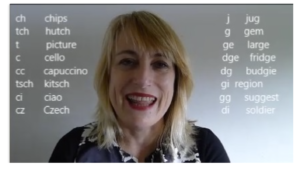The English Orthography
The word ‘orthography’ refers to the rules for writing a language, such as the conventions of spelling and punctuation. In an alphabetic script, like English, this definition also includes its grapheme-phoneme (letter-sound) correspondences.
The English orthography is the alphabetic spelling system used by the English language. English orthography uses a set of rules that governs how speech is represented in writing.
English orthography comprises the set of rules used when writing the English language, allowing readers and writers to associate written graphemes with the sounds of spoken English, as well as other features of the language.
English has relatively complicated spelling rules because of the complex history of the English language. Most sounds in English can be spelled in more than one way and many spellings can be pronounced in more than one way.
The English language contains 24 to 27 (depending on dialect) separate consonant phonemes and between fourteen to twenty vowels and diphthongs. However, English only uses the twenty-six letters of the Latin alphabet.
For this reason, a one-to-one correspondence between character and sound is not possible to denote for all the complex sounds. This means that the letters have to multi-task!
In transparent orthographies, reading is typically taught using purely phonics-based approaches with the focus on the grapheme – phoneme correspondences (Excerpt from My English Language: English language resources for EFL students and teachers website, English Orthography – The English Writing System – English Spelling).
View the following video explaining the English Orthography.
https://youtu.be/-_MA9QtdS3k?si=4g6yuNllC1PdWH8g
For further Information
English Orthography – The English Writing System – English Spelling
Australian English
There are 44 phonemes in Australian English – 24 consonant phonemes and 20 vowel phonemes. This is quite different from letters of which there are 26.
In order to represent the 44 phonemes of Australian English we use a range of graphemes (letters or letter combinations).
Now Listen to Alison Clarke, a well know Australian speech pathologist and creator of the Spelfabet website, demonstrate the 44 sounds of Australian English (SAE)
https://youtu.be/KlMDwolcfzU?si=jPATVCdwkpG4gCO-
What are the 44 sounds of Australian English?

Resources for your reference
» Phonemes are sounds AND articulatory gestures (Spelfabet)
44SoundsofAusEnglish.pdf (Vic Ed)
44_sounds_200_spellings_book_2014.pdf (Alison Clarke, 2014, Spelfabet)
What are the 44 sounds of English?
Standard Australian English (SAE).
Macquarie University defines Standard Australian English (SAusE) as the dominant Australian dialect which is used by most Australians. It is one of three major dialect subgroups of Australian English, the others being, the Australian First Nations varieties of English, and the Ethnocultural Australian varieties of English. Standard Australian English is the English spoken and written in Australia for formal and public purposes such as schools, the media and the government.
Read the following brief explanation of Australian English, Dialect, Accent, Subgroups – Standard Australian English. (Macquaurie University)
Macquarie University – Australian English
Resources for your reference: EALD_teacher_resource.pdf
